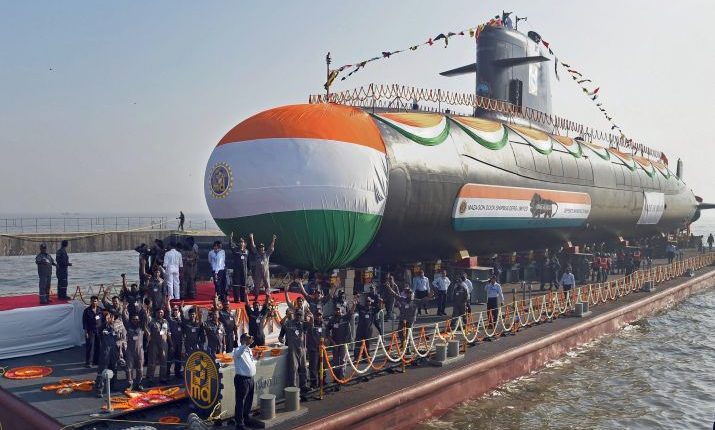The Mighty Machine : INS KARANJ
The maritime history of India dates back to 6,000 years ago with the birth of an art of navigating during the Indus Valley Civilization. The primary objective of the Navy is to safeguard the nation’s maritime borders, and in conjunction with other Armed Forces of India. In 1956, Ram Das Katari became the first Indian flag officer and was appointed the first Indian Commander of the Fleet on 2 October. On 22 April 1958, Vice Admiral Katari assumed the command of the Indian Navy from Carlill as the first Indian Chief of Staff of the Indian Navy. With the departure in 1962 of the last British officer on secondment to the Navy, Commodore David Kirke, the Chief of Naval Aviation, the Indian Navy finally became an entirely Indian service. As of June 2019, the Indian Navy has 67,252 active and 55,000 reserve personnel in service and has a fleet of 150ships and submarines and 300 aircraft. As of October 2020, the operational fleet consists of 1 Aircraft carrier, 1 Transport dock, 8 Landing ship tanks, 10 destroyers, 13 frigates, 1 nuclear-powered attack submarine. 1 ballistic missile submarine, 15 conventionally-powered attack submarine, 23 corvettes, 4 fleet tankers, and several small patrol boats.

Submarines in Indian Navy —
Submarines play a vital role fir the Indian Navy in the time of peace as well as in war. They are designed as such to fully operate under the water or above it .Indian Navy is continuously modernizing itself in the field of Submarine whether it would be diesel engine or a nuclear submarine.
Indian Navy’s Submarine fleet consists of One Nuclear-powered submarine, 15 conventionally powered attack submarine. The conventional attack submarines of the Indian Navy consist of The Kalvari, The Sindughosh and The Shishumar classes. Navy also possesses a single Akula class Nuclear powered attack submarine named INS Chakra. Chakra is under lease to India for a period of ten years .Negotiations is on with Russia for the lease of the Second Akula-class submarine.
INS KARANJ:-
The Mazagaon Dock Limited (MDL) on Monday delivered the third Scorpene-class submarine to the navy after two years of sea trials. The submarine was launched in January 2018 for sea trials and will be commissioned as INS Karanj.

INS Karanj is India’s third of the six Scorpene-class submarines with superior stealth and combat capabilities. The diesel-electric attack submarine has been built under MDL’s Project-75 in collaboration with a French firm. The 67.5 metres long Scorpenes, considered being one of the quietest diesel-electric submarines in service around the world currently, displacing around 1,700 tonnes when submerged. The boats, which have an endurance of around 45 days, are armed with heavyweight torpedoes, anti-ship missiles and mines.
Six Scorpene class submarine has been in contract for the Indian Navy:
Two submarines of this class — INS Kalvari and INS Khanderi — are already in service with the Navy. The fourth of the class — INS Vela — is currently undergoing trials at sea, and will be inducted this year. The fifth boat of the class, INS Vagir, was launched in November 2020 and will be commissioned in 2022. The sixth, named ‘Vagsheer’ after a Vela-class diesel-electric submarine of the Indian Navy commissioned in 1973, is currently under construction. Two SSK submarines built by MDL in 1992 and 1994 are still in service today, after more than 25 years.
With the construction of the Leander and Godavari class frigates, Khukri class Corvettes, Missile Boats, Delhi and Kolkata class destroyers, Shivalik class Stealth Frigates, the SSK submarines and the Scorpene submarine under its belt, the history of modern day MDL almost maps the history of indigenous warship building in India.” Scorpene-class submarines are a key asset for the Navy as they can undertake anti-surface as well as anti-submarine warfare missions. Further, they help in intelligence gathering, mine laying etc.
India has transformed from a buyer’s navy to a builder’s navy.
buy azithromycin online buy azithromycin online no prescription
Indian Navy needs more submarines to deal with the Chinese presence in the Indian Ocean region. India is also working on a number of projects to build an indigenous fleet of nuclear submarines. With inducting more submarines and increasing fleet for the Navy, India is certainly going to uphold its position in International maritime forces.
Jai Hind.








